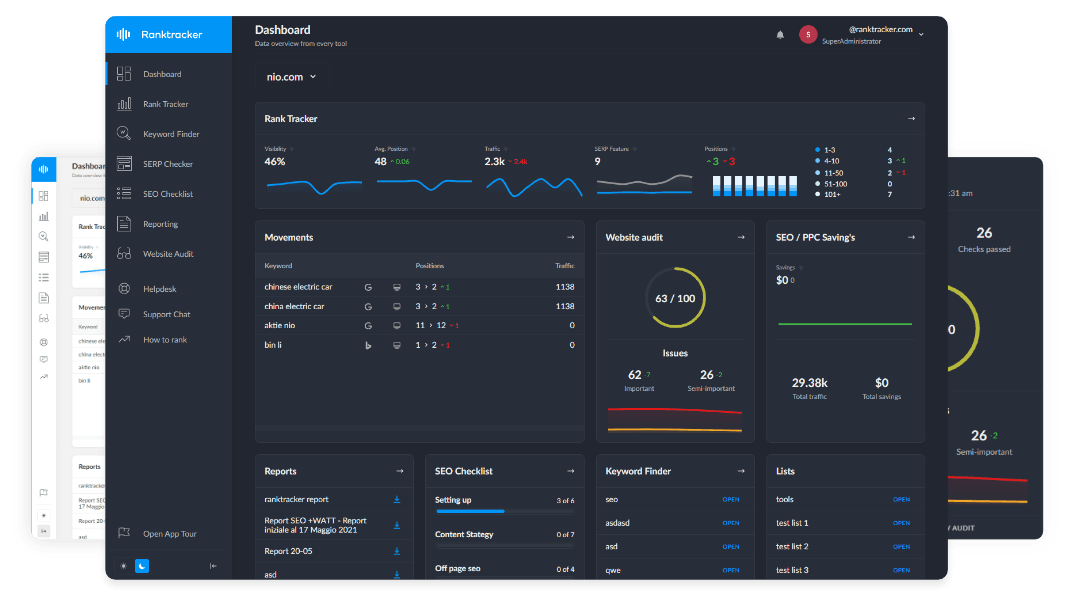Intro
If you’re running an e-commerce store, affiliate review site, or brand blog, there’s huge value in ranking for “versus” and product comparison keywords. Pages that compare two or more products—like Letrigo’s Zephyer vs. Robin electric trikes—not only attract users deep in the decision funnel, but also drive high-converting, monetizable traffic.
But how do you make your comparison page outrank competitors on Google? It comes down to content depth, topical authority, technical SEO, and a user-first approach.
This in-depth Ranktracker guide reveals how to build, optimize, and scale product comparison pages for top rankings and conversions, using Zephyer vs. Robin as a real-world SEO blueprint.

Why “Product Comparison” Keywords Are SEO Gold
-
High Buyer Intent: Searchers comparing products are typically close to purchasing.
-
SERP Features: These keywords often trigger featured snippets, “People Also Ask,” and review carousels.
-
Authority Building: In-depth, balanced comparisons position your site as an expert—not just a seller.
-
Natural Link Magnet: The most helpful, unbiased comparisons earn links from blogs, forums, and social media.
Step 1: Keyword Research & Intent Analysis
Use Ranktracker’s Keyword Finder
Before you write, map the search landscape:
-
Primary Keyword:
letrigo zephyer vs robin electric trike -
Secondary Keywords:
-
best electric trike for hills -
zephyer review -
robin electric trike specs -
electric trike comparison 2025 -
which electric trike is better -
Long-tail/Intent Questions:
-
is zephyer good for city riding? -
can robin handle steep hills? -
zephyer vs robin battery life
Tip: Use Ranktracker to assess keyword difficulty, traffic potential, and SERP competitors.
Step 2: Site Structure & Topical Authority
Why Topical Authority Matters
Google ranks sites, not just pages. To truly dominate comparison keywords:
-
Build a Content Cluster: Surround your main comparison with supporting articles (e.g., “Top 5 Electric Trikes 2025,” “How to Maintain Your E-Trike,” “Mid-Drive vs. Hub Motor: Pros & Cons”).
-
Internal Linking: Link all related content to your main comparison page and vice versa, boosting relevance and crawlability.
-
Consistent Branding: Use expert tone, original insights, and unique value throughout your cluster.

Step 3: The Ideal Comparison Page Structure
1. Clear, Keyword-Rich Title:
- Letrigo Zephyer vs. Robin Electric Trike: Full Comparison & Buyer’s Guide (2025)
2. Strong Introduction:
-
Highlight user intent (“Which should I buy?”).
-
Promise a detailed, unbiased breakdown.
3. Quick Comparison Table
- Use HTML for fast loading and crawlability.
4. In-Depth Feature Sections
Use H2/H3s with keywords:
-
Motor Performance & Hill-Climbing (SEO: “electric trike for hills”)
-
Battery Life & Real-World Range (SEO: “electric trike long range”)
-
Ride Comfort & Suspension
-
Cargo & Commuter Capabilities
-
Price & Value Analysis
5. Pros and Cons (Bullet Lists for Clarity & Featured Snippet Potential)
6. FAQ Section (Use FAQ Schema)
-
“Which is better for city commuting?”
-
“How does battery life compare?”
-
“What’s the warranty difference?”
7. Final Verdict
- Make a clear, data-backed recommendation for different buyer profiles.
8. Strong Internal and External Links
-
Internal: “Read our full guide to e-bike SEO optimization.”
-
External: Link to manufacturer or trusted reviews for added authority.
Step 4: Content Best Practices for SEO
-
Short Paragraphs: Improves readability and time-on-page.
-
Relevant Images/Alt Text: Include product photos, comparison charts, and “in use” shots.
-
Expert Analysis: Add original commentary, test data, or customer reviews.
-
Schema Markup: Product, Review, FAQ, and Breadcrumb schema for enhanced SERP presence.
-
Table of Contents: Use jump links for easy navigation, especially on mobile.
-
Unique Content: Avoid manufacturer copy/paste—rewrite, add insights, and cite sources.
Step 5: Technical SEO & Performance
-
Mobile Optimization: Product comparison traffic is often mobile-first.
-
Fast Loading: Optimize images and use lightweight HTML tables.
-
Meta Data: Custom meta title, description, and Open Graph tags.
-
Canonical Tags: Avoid duplicate content if multiple comparisons exist.
-
Core Web Vitals: Clean layout, no intrusive ads, and minimal popups.
Step 6: Off-Page SEO & Monetization
-
Backlink Outreach: Share your guide with e-bike forums, Facebook groups, and Reddit threads.
-
Social Proof: Include user reviews or ratings, and link out to respected reviewers.
-
Affiliate Monetization: Use do-follow or cloaked affiliate links in CTAs, comparison tables, and final verdicts.
-
Email Capture: Offer a downloadable “Electric Trike Buyer’s Checklist” to grow your email list.
Example: High-Value SEO Comparison Section
Motor & Hill-Climbing Power: Zephyer vs. Robin
Most comparison searchers want real answers on performance. In your SEO copy, highlight that the Zephyer’s 500W hub motor is best for flat city routes, but Robin’s 130 Nm mid-drive conquers 25-degree hills even when loaded. Use phrases like “best electric trike for steep hills” and answer related user questions in your paragraphs to rank for both product and intent-based searches.
Example: Final Verdict for Conversion
For most urban commuters and budget-focused buyers, Zephyer is the smart, reliable choice. But if you regularly face hills, haul heavy loads, or want top-end range, Robin’s advanced mid-drive system is worth the investment. Always compare the latest prices and user reviews before buying, and check our complete guide to e-bike SEO for more optimization tips.
FAQs (with Schema Potential)
-
Is the Robin worth the higher price for delivery work?
-
Which trike is easier to maintain?
-
How do Zephyer and Robin compare on warranty and service?
-
What are the real-world user ratings for each?
Internal Linking & Content Cluster Examples
-
SEO Guide for Affiliate Product Reviews
-
How to Optimize Category Pages for E-Commerce
-
2025 Electric Trike Market Trends
-
Beginner’s Guide to Structured Data for Product Pages
Conclusion: Turn SEO Comparisons Into Revenue
Mastering the art of the SEO comparison page—like our Letrigo Zephyer vs. Robin example—lets you capture buyers at the perfect moment. With a well-researched, expertly-structured page and a supporting content cluster, you’ll not only outrank generic affiliate reviews, but also build site authority, brand trust, and recurring revenue.
For more advanced strategies, tool reviews, and actionable SEO guides, explore the Ranktracker blog or leverage our Keyword Finder and SERP Checker tools to unlock your next big opportunity.

